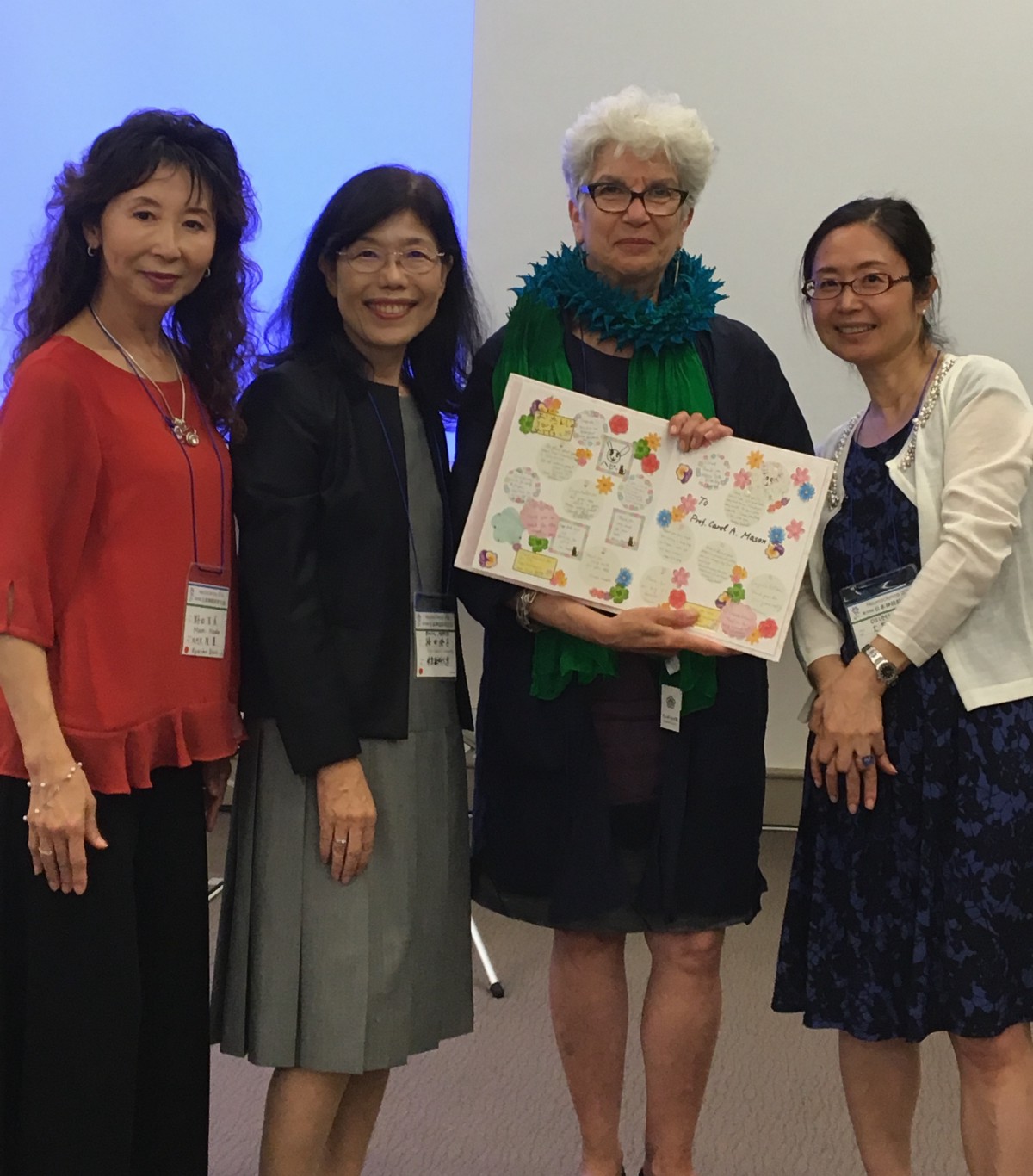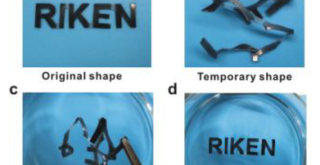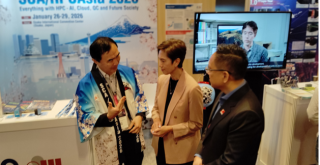A Barbie doll from 1965. Image: Laura Bernhardt, CC BY-ND 2.0
This post originally appeared on Medium
Gender parity is still very much a work in progress in Japan. With various government and institutional initiatives — “womenomics” and “make women shine” are two of the current slogans — the promotion of gender equality in the workplace is definitely on the agenda. In science, the situation has improved in the past 30 years, says Noriko Osumi, professor and director of the Center for Neuroscience at Tohoku University, but attitudes and infrastructure still lag behind Europe and the United States.
At the recent Japan Neuroscience Society meeting, Osumi was one of the conveners of an evening seminar on gender equality. The goal was not only to spark discussion but to present scientists with guidance on “changing the ratio” as STEM (science, technology, engineering, mathematics) fields in Japan strive for greater gender equality.
The statistics presented by Osumi, however, showed what an uphill climb it is: while Japanese boys’ and girls’ test scores in math, for example, are on par, exceeding those of their American counterparts, less than 40 percent of university students in Japan are female, and only 13 percent of professorships are held by women (this Japan-wide survey of gender in STEM offers even more detailed statistics). Stereotypes and cultural norms in Japan see girls socialized away from STEM subjects at a young age.
“This is where implicit gender bias starts,” says Osumi. “We need increased awareness of stereotyped views, in both men and women, so everyone who wants to can have a successful scientific career path.” Sadly, one such stereotype, that of the “overworked Japanese man”, is far from a myth and may be a great contributor to women’s absence from the workplace, not just in science. With work and faculty meetings often set at extremely early or late hours, women may be unintentionally excluded and “housekeeping and taking care of children are still considered to be women’s work,” says Osumi. And like the United States, Japan also has a “leaky pipeline” that sees women drop out of higher education and academia, with few making it to the top.

The conveners of the gender equality seminar at the Japan Neuroscience Society meeting on July 20, 2016: Dr. Mami Noda (Kyushu University), Prof. Sumiko Mochida (Tokyo Medical University), Prof. Noriko Osumi (Tohoku University) with speaker Prof. Carol Mason (Columbia University)
“Women tend to undervalue themselves, while men have a more positive view and presentation of their skills and accomplishments,” says Osumi. “It can be a small thing, but it compounds over time.” This can lead to quips like women “need to work twice as hard as men”, advice actually given to Osumi by her graduate advisor, “something that would be politically incorrect to say now even in Japan.” Brushing off this advice and setting her own goals proved to be a successful strategy for Osumi, who became the first female professor at Tohoku University Medical School.
To counter the stark situation, this year organizer’s invited Columbia University professor Carol Mason to speak on the resources and community action that can help bring about change. As past-president of the Society for Neuroscience, Mason has championed training, mentorship and the “lean in” approach. “We wanted to bring Carol in as a role model for Japanese female researchers,” says Osumi. There are also other sparks of progress: active gender equality promotion support systems are in place at Tohoku University, which has the lowest ratio of women researchers of Japan’s National Seven Universities, despite having been the first to admit female students, in 1913.
For the gender equality situation to improve in Japan, Osumi says more time and more childcare places are needed, as well as a greater stream of talented and motivated women to enter scientific careers. As evidenced by the gender makeup at the seminar — about 80 percent women and 20 percent men — it may still be a while before the gender equality message reaches those who need to hear it most.
[like]
This post originally appeared on Medium
Gender parity is still very much a work in progress in Japan. With various government and institutional initiatives — “womenomics” and “make women shine” are two of the current slogans — the promotion of gender equality in the workplace is definitely on the agenda. In science, the situation has improved in the past 30 years, says Noriko Osumi, professor and director of the Center for Neuroscience at Tohoku University, but attitudes and infrastructure still lag behind Europe and the United States.
At the recent Japan Neuroscience Society meeting, Osumi was one of the conveners of an evening seminar on gender equality. The goal was not only to spark discussion but to present scientists with guidance on “changing the ratio” as STEM (science, technology, engineering, mathematics) fields in Japan strive for greater gender equality.
The statistics presented by Osumi, however, showed what an uphill climb it is: while Japanese boys’ and girls’ test scores in math, for example, are on par, exceeding those of their American counterparts, less than 40 percent of university students in Japan are female, and only 13 percent of professorships are held by women (this Japan-wide survey of gender in STEM offers even more detailed statistics). Stereotypes and cultural norms in Japan see girls socialized away from STEM subjects at a young age.
“This is where implicit gender bias starts,” says Osumi. “We need increased awareness of stereotyped views, in both men and women, so everyone who wants to can have a successful scientific career path.” Sadly, one such stereotype, that of the “overworked Japanese man”, is far from a myth and may be a great contributor to women’s absence from the workplace, not just in science. With work and faculty meetings often set at extremely early or late hours, women may be unintentionally excluded and “housekeeping and taking care of children are still considered to be women’s work,” says Osumi. And like the United States, Japan also has a “leaky pipeline” that sees women drop out of higher education and academia, with few making it to the top.

The conveners of the gender equality seminar at the Japan Neuroscience Society meeting on July 20, 2016: Dr. Mami Noda (Kyushu University), Prof. Sumiko Mochida (Tokyo Medical University), Prof. Noriko Osumi (Tohoku University) with speaker Prof. Carol Mason (Columbia University)
“Women tend to undervalue themselves, while men have a more positive view and presentation of their skills and accomplishments,” says Osumi. “It can be a small thing, but it compounds over time.” This can lead to quips like women “need to work twice as hard as men”, advice actually given to Osumi by her graduate advisor, “something that would be politically incorrect to say now even in Japan.” Brushing off this advice and setting her own goals proved to be a successful strategy for Osumi, who became the first female professor at Tohoku University Medical School.
To counter the stark situation, this year organizer’s invited Columbia University professor Carol Mason to speak on the resources and community action that can help bring about change. As past-president of the Society for Neuroscience, Mason has championed training, mentorship and the “lean in” approach. “We wanted to bring Carol in as a role model for Japanese female researchers,” says Osumi. There are also other sparks of progress: active gender equality promotion support systems are in place at Tohoku University, which has the lowest ratio of women researchers of Japan’s National Seven Universities, despite having been the first to admit female students, in 1913.
For the gender equality situation to improve in Japan, Osumi says more time and more childcare places are needed, as well as a greater stream of talented and motivated women to enter scientific careers. As evidenced by the gender makeup at the seminar — about 80 percent women and 20 percent men — it may still be a while before the gender equality message reaches those who need to hear it most
[like]
neuroamanda
Science writer at the RIKEN Brain Science Institute in Japan











